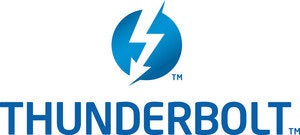Next-gen USB SuperSpeed to eliminate power cords
But what Intel hasn’t hyped much is the fact that the upgrade to the USB Super Speed 3.0 spec will also boost power transfer in both directions from 10 watts to 100 watts.
The increase in power means that computer monitors, laptops, and even high definition televisions could be powered through the use of a single USB hub, which would also allow for a bi-directional data flow.
The Thunderbolt peripheral interconnect will soon move from 10Gbps to 20Gbps. The USB SuperSpeed specification will double from 5Gbps to 10Gpbs.
For USB 3.0 (also called SuperSpeed), the data transfer speed increase is evolutionary, but the power transfer is revolutionary, according to Jeff Ravencraft, president of the USB Implementers Forum (USB-IF). The USB-IF is a nonprofit organization founded by the developers of the USB specification, which includes Intel, Microsoft, and Hewlett-Packard.
“This is going to change the way computers, peripheral devices, and even HDTVs will not only consume but deliver power,” Ravencraft said. “You can have an HDTV with a USB hub built into it where not only can you exchange data and audio/video, but you can charge all your devices from it.”
For example, a laptop typically requires 65 watts to power it and charge its battery, which leaves additional power for displays or other peripherals. At last year’s Intel Developer’s Forum, the USB-IF demonstrated a USB SuperSpeed hub powering a Lenovo notebook, which was also sending audio/video to two other displays while being charged from the cable. The built-in hub eliminated the need for separate power bricks for each device, Ravencraft said.
 Computerworld
ComputerworldThe new USB Power Delivery specification, which comes with the bandwidth upgrade, is compatible with existing cables and connectors, enabling voltage and currents to be negotiated over the USB power pins. The power can be used or delivered over the same pins without having to change the cable’s direction, Ravencraft said.
“So with this new specification, you can go from very small devices with 5 volts, 2 amps or 10 watts—where USB starts—up to 20 volts 5 amps and 100 watts,” Ravencraft said. “This power delivery capability is going to extend the ease of use for consumers, reduce clutter in the work and home environment, but also reduce electronic waste filling up landfills with custom chargers.”
Consumers toss out millions of battery chargers every year. In fact, cell phone chargers account for almost 100,000 tons of trash annually in the U.S. In the E.U., chargers represent about 51,000 tons of landfill waste.
The need for speed
For Thunderbolt, this is the first speed increase since its initial release in 2011.Based on copper, the Thunderbolt specification contains two protocols: PCI Express (PCIe) and DisplayPort. The Thunderbolt chip switches between the two protocols to support varying devices. DisplayPort offers HD display support as well as eight channels of HD audio. The current Thunderbolt connector has two full-duplex channels; each are bi-directional and capable of 10Gbps of throughput.
While the upgrade to 20Gbps maintains Thunderbolt’s significant edge over USB 3.0 in terms of bandwidth, the USB specification is the de facto industry standard peripheral interconnect. Thunderbolt has been mainly adopted by Apple.
“We have over 865 USB SuperSpeed products today,” Ravencraft said. “That’s well over double what we had a year ago.”
Power efficiency
SuperSpeed USB is optimized for power efficiency. It uses only 1.5 amps of power for charging devices, or about one-third of the power of its predecessor Hi-Speed USB (v2.0).Thunderbolt will get its performance boost from a new controller chip, code-named Falcon Ridge. Intel introduced that chip at the NAB Show earlier this month. The controller chip is slated to go into production by the end of this year.
The new USB SuperSpeed 10Gbps specification is scheduled to be completed in July.
“I think we’ll see products in the market by the Christmas season in 2014,” Ravencraft said. “The companies have to build silicon - device, host, bridge and hub silicon.”
Along with the power improvements, the upgrades to USB and Thunderbolt lend themselves to higher-definition displays, as well as supporting more external drives based on NAND flash technology.

The increased bandwidth will bode well for Macs as they begin to support 4K displays, which have a resolution of 3840 x 2160 pixels—four times today’s standard high-definition resolution of 1920 x 1080 pixels. Thunderbolt ports are also available in a few PCs from Acer, Hewlett-Packard, Lenovo and Dell.
“As manufacturers begin to look at 4K video for laptops and desktop computers, a USB DisplayLink or Thunderbolt port becomes an option,” Potter said.
An uncompressed 4K video runs at roughly 7.6Gbps, so a speed increase—at least for USB—is needed there. With the new USB power delivery standard supporting up to 100W, USB docking stations for laptops will need the increased bandwidth to support both video and data simultaneously, particularly when using multiple monitors and peripherals.
The new SuperSpeed 3.0 specification will increase power to 100 watts and offer bidirectional data and audio/visual transfer, meaning a laptop or monitor with a USB hub could power many other devices, including an HDTV
No comments:
Post a Comment